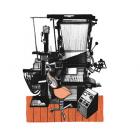Daily newspapers allowed news to circulate more widely and rapidly than ever before. They transformed political communications and encouraged critical self-reflection within societies. Citizens came to depend on up-to-date news reports that broadened their horizons beyond their own breadth of experience. They began demanding the right to free speech without persecution. They placed value on being enlightened and well informed in order to act responsibly—a trend that continues to this day.
Today, thanks to the Internet, news spreads instantaneously throughout the world. Consequently, every individual in the Anthropocene may be held accountable for contributing to a sustainable future on this planet. Discussion forums and worldwide petitions and calls for political action have significantly enabled an individual’s ability to be involved personally.
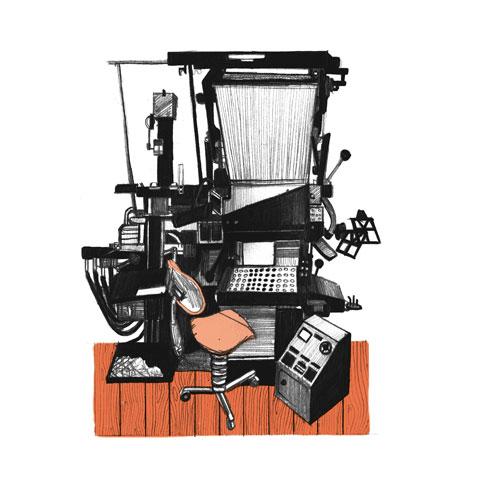
Drawn by Eric Reh , 2014.
 This work is licensed under a Creative Commons Attribution-NonCommercial-NoDerivatives 4.0 International License.
This work is licensed under a Creative Commons Attribution-NonCommercial-NoDerivatives 4.0 International License.
The Eighth Wonder of the World: Linotype
Text and images by Eric Reh
University of the Arts (UdK), Berlin
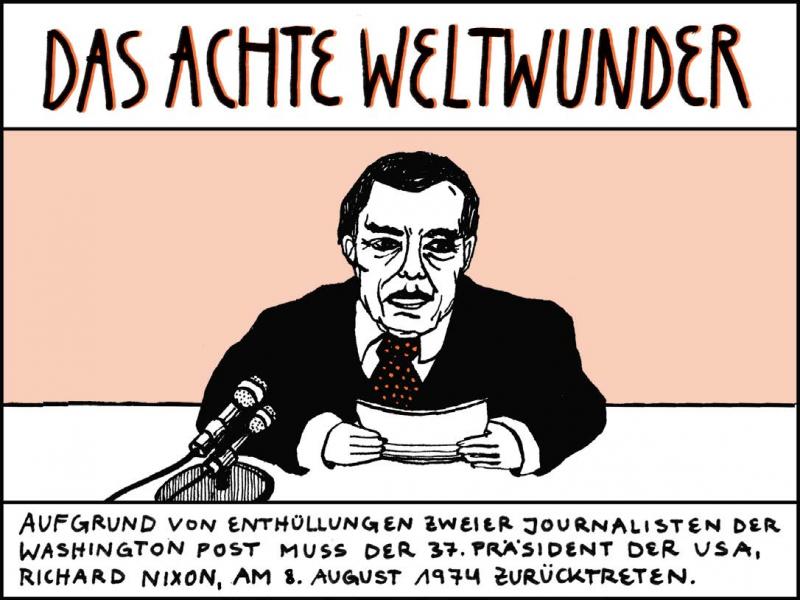
The Eighth Wonder of the World
“On August 8,1974, Richard Nixon abdicated his position as the 37th President of the United States after two journalists working for the Washington Post revealed a scandal.”
The Eighth Wonder of the World
“On August 8,1974, Richard Nixon abdicated his position as the 37th President of the United States after two journalists working for the Washington Post revealed a scandal.”
Drawn by Eric Reh , 2014.  This work is licensed under a Creative Commons Attribution-NonCommercial-NoDerivatives 4.0 International License.
This work is licensed under a Creative Commons Attribution-NonCommercial-NoDerivatives 4.0 International License.
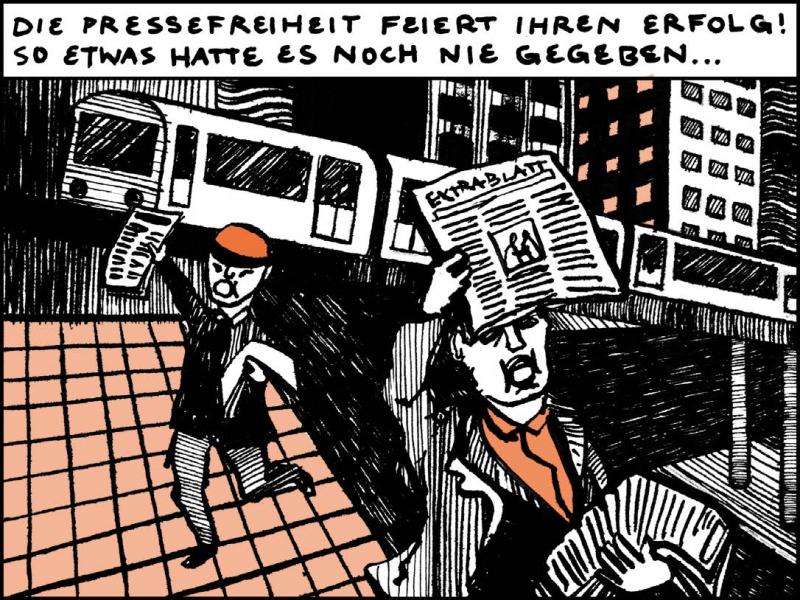
The great success of the “Freedom of the Press” is celebrated like never before.
The great success of the “Freedom of the Press” is celebrated like never before.
Drawn by Eric Reh , 2014.  This work is licensed under a Creative Commons Attribution-NonCommercial-NoDerivatives 4.0 International License.
This work is licensed under a Creative Commons Attribution-NonCommercial-NoDerivatives 4.0 International License.

It was thanks to Ottmar Mergentahler’s Linotype Typesetting machine—an invention of 1886 that Thomas Edison declared the “Eight Wonder of the World”—that newspapers became such a huge success in society.
It was thanks to Ottmar Mergentahler’s Linotype Typesetting machine—an invention of 1886 that Thomas Edison declared the “Eight Wonder of the World”—that newspapers became such a huge success in society.
Drawn by Eric Reh , 2014.  This work is licensed under a Creative Commons Attribution-NonCommercial-NoDerivatives 4.0 International License.
This work is licensed under a Creative Commons Attribution-NonCommercial-NoDerivatives 4.0 International License.

The letters no longer had to be placed individually by hand. Instead, entire lines could be typed in using a keyboard. This sped up the production process immensely.
The letters no longer had to be placed individually by hand. Instead, entire lines could be typed in using a keyboard. This sped up the production process immensely.
Drawn by Eric Reh , 2014.  This work is licensed under a Creative Commons Attribution-NonCommercial-NoDerivatives 4.0 International License.
This work is licensed under a Creative Commons Attribution-NonCommercial-NoDerivatives 4.0 International License.
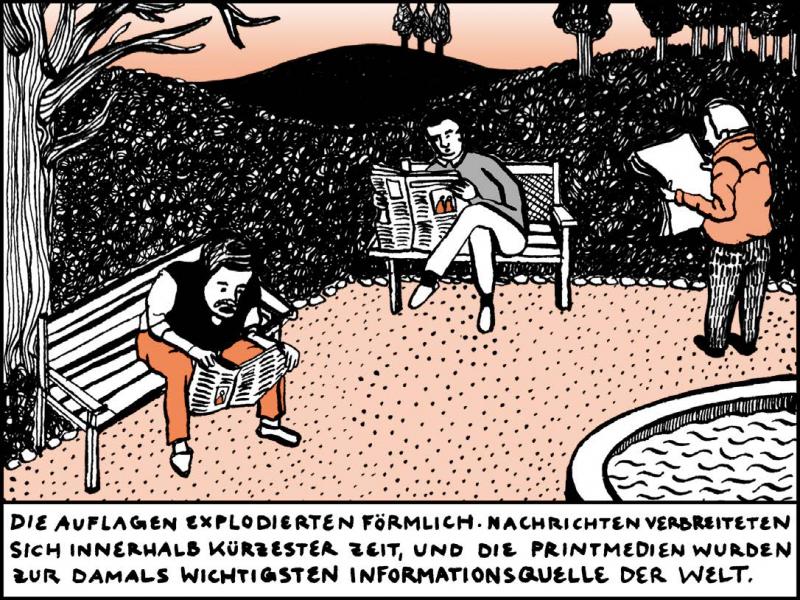
The number of newspaper editions published nearly exploded! News spread in no time, and printed media became the most important source of information in the world.
The number of newspaper editions published nearly exploded! News spread in no time, and printed media became the most important source of information in the world.
Drawn by Eric Reh , 2014.  This work is licensed under a Creative Commons Attribution-NonCommercial-NoDerivatives 4.0 International License.
This work is licensed under a Creative Commons Attribution-NonCommercial-NoDerivatives 4.0 International License.
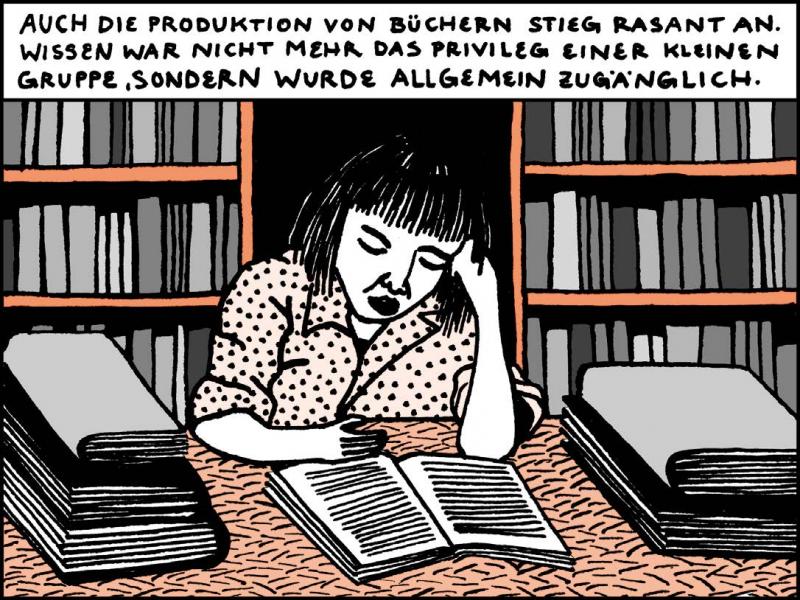
The production of books also increased tremendously quickly. No longer was knowledge the privilege of only a small group of people—it became accessible to all.
The production of books also increased tremendously quickly. No longer was knowledge the privilege of only a small group of people—it became accessible to all.
Drawn by Eric Reh , 2014.  This work is licensed under a Creative Commons Attribution-NonCommercial-NoDerivatives 4.0 International License.
This work is licensed under a Creative Commons Attribution-NonCommercial-NoDerivatives 4.0 International License.
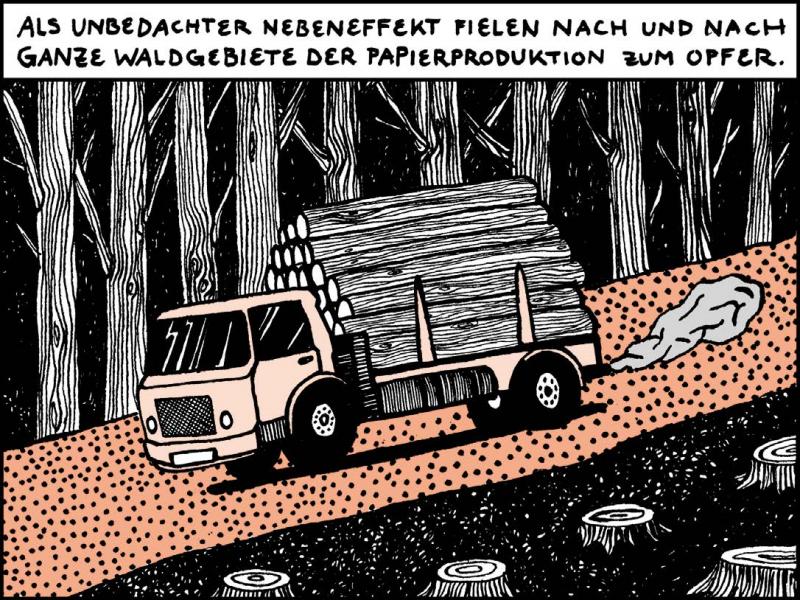
An unforeseen side effect though, was that entire forests fell victim to the process of paper production.
An unforeseen side effect though, was that entire forests fell victim to the process of paper production.
Drawn by Eric Reh , 2014.  This work is licensed under a Creative Commons Attribution-NonCommercial-NoDerivatives 4.0 International License.
This work is licensed under a Creative Commons Attribution-NonCommercial-NoDerivatives 4.0 International License.
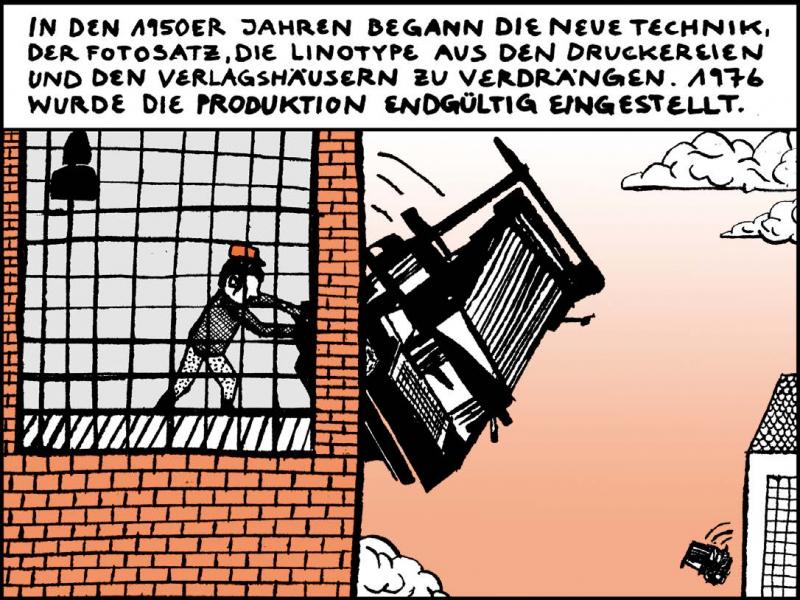
In the 1950s, a new technique, phototypesetting, started to replace linotype in publishing houses. By 1976, the linotype production process had been completely discontinued.
In the 1950s, a new technique, phototypesetting, started to replace linotype in publishing houses. By 1976, the linotype production process had been completely discontinued.
Drawn by Eric Reh , 2014.  This work is licensed under a Creative Commons Attribution-NonCommercial-NoDerivatives 4.0 International License.
This work is licensed under a Creative Commons Attribution-NonCommercial-NoDerivatives 4.0 International License.
Artist’s comment:
It was a rewarding experience for me, both in an informative and a creative sense, to research and work on this fascinating machine and its influence on the media landscape and world affairs. I discovered ink drawing as a new drawing technique. The strong black-and-white contrast fits very well with the theme of typography.
How to cite
Reh, Eric. “Linotype .” Environment & Society Portal, Multimedia Library, 2014. http://www.environmentandsociety.org/node/6639/.
The comic also appears in Alexandra Hamann, Reinhold Leinfelder, Helmuth Trischler, and Henning Wagenbreth, eds., Anthropozän – 30 Meilensteine auf dem Weg in ein neues Erdzeitalter. Eine Comic-Anthologie (Munich: Deutsches Museum, 2014).

This work is licensed under a Creative Commons Attribution-NonCommercial-NoDerivatives 4.0 International License.


